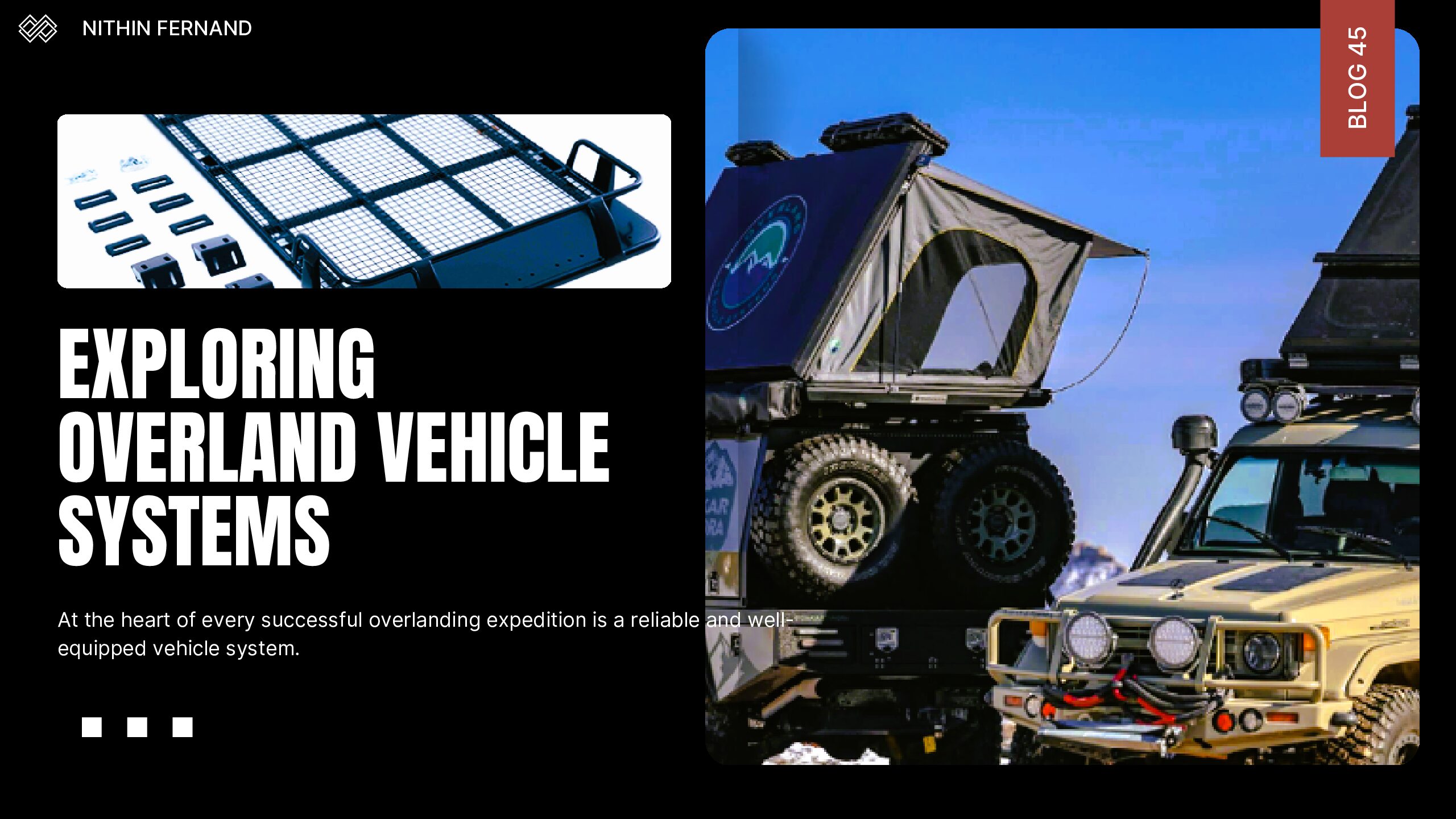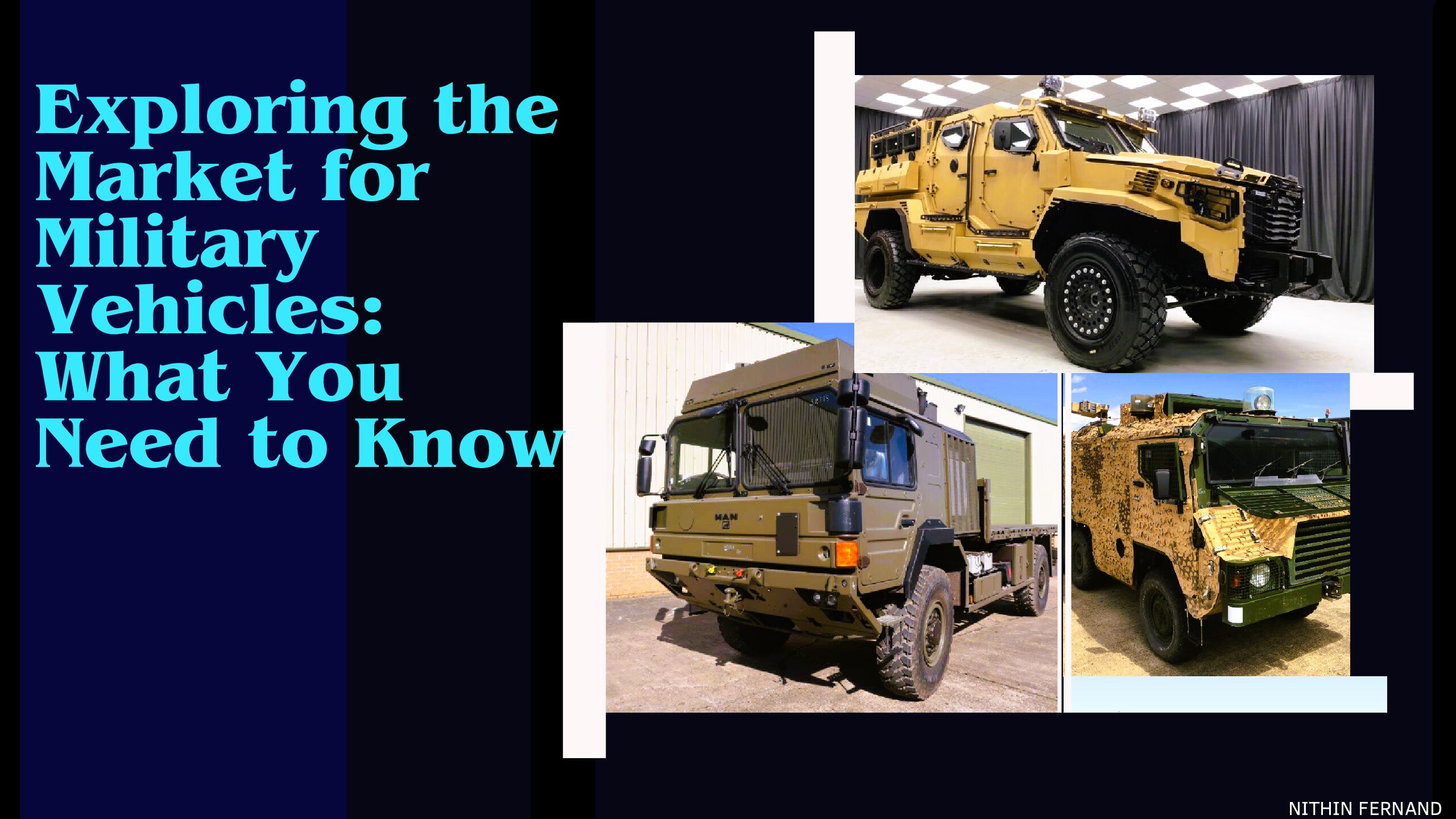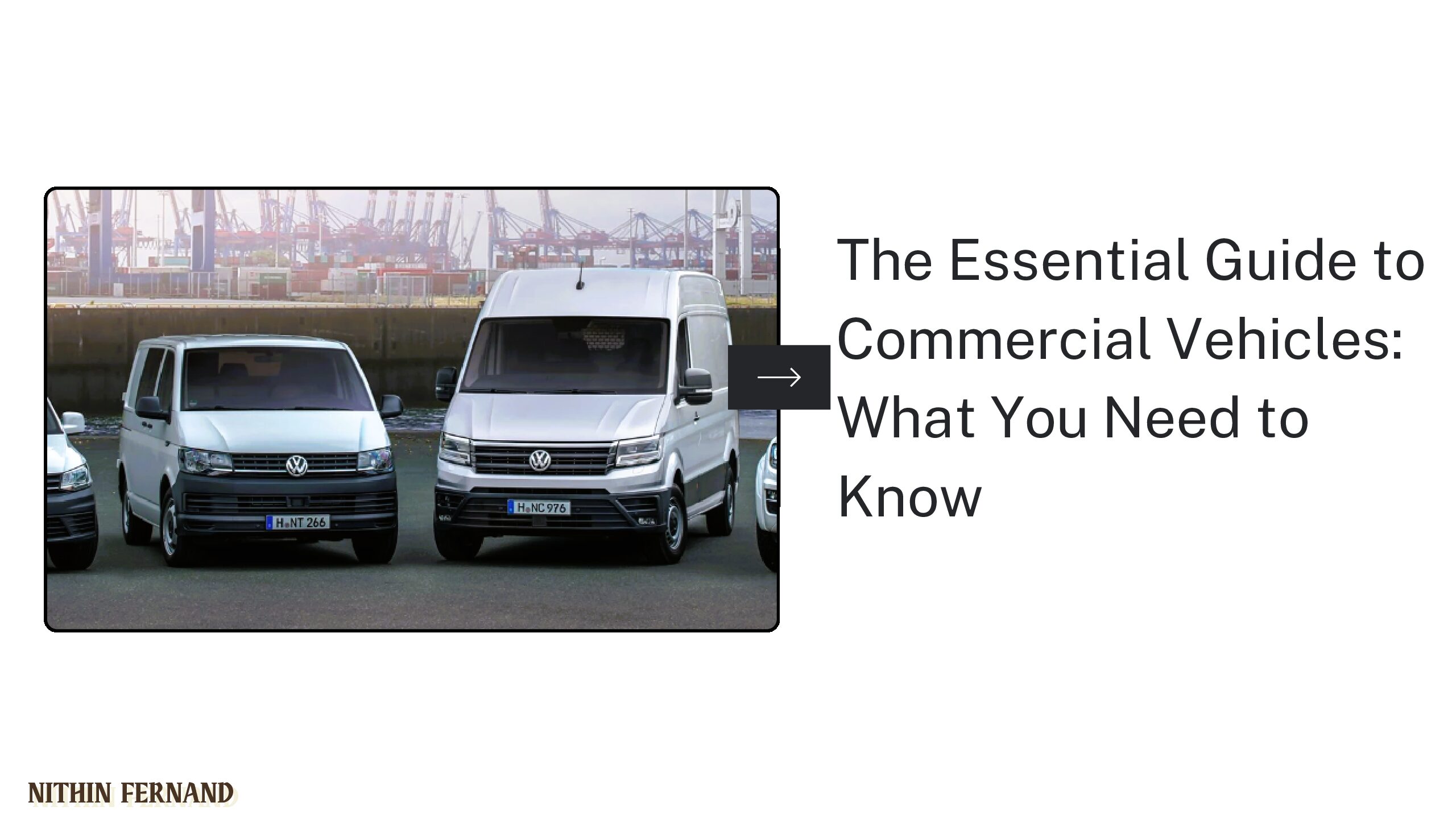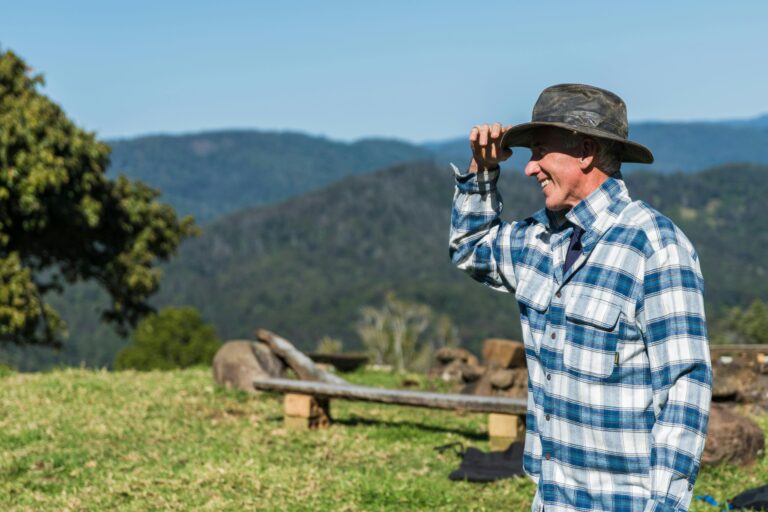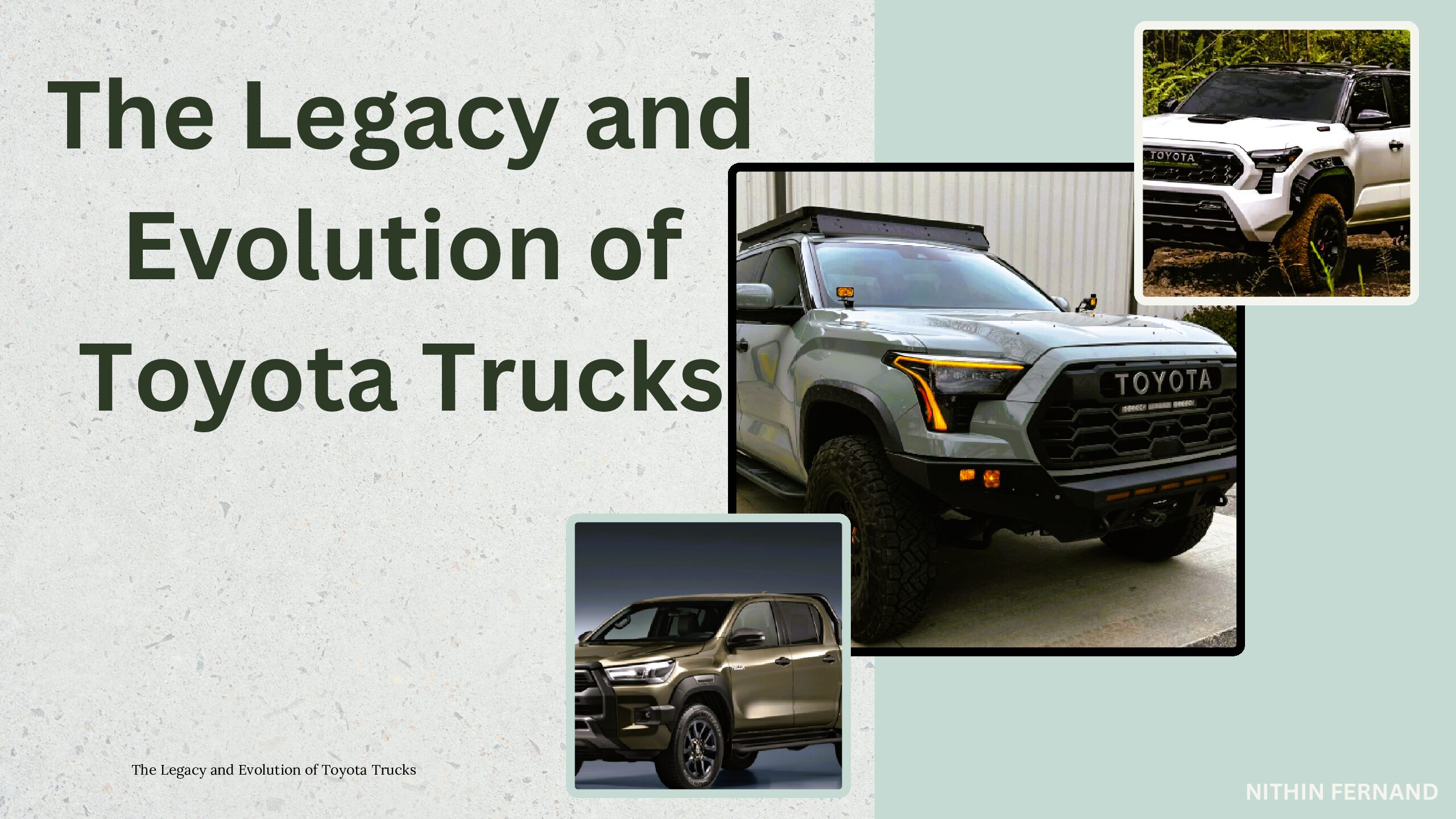Exploring Overland Vehicle Systems: Essential Gear for Your Next Adventure 2024
Overlanding is a unique form of self-reliant travel that encompasses exploring remote destinations in a specially equipped vehicle, often with the intent of trekking off the beaten path. Unlike traditional road trips or camping, overlanding emphasizes the journey as much as the destination, encouraging adventurers to traverse diverse terrains, ranging from rugged mountain trails to sandy desert roads. As outdoor enthusiasts seek new ways to connect with nature and experience the thrill of adventure, overlanding has seen a significant rise in popularity, fostering a vibrant community of passionate travelers who share tips, trails, and experiences.
At the heart of every successful overlanding expedition is a reliable and well-equipped vehicle system. Whether navigating steep inclines, crossing rivers, or camping in wilderness areas, having the right gear is crucial for safety, comfort, and convenience. A well-prepared vehicle can make the difference between a smooth adventure and a challenging ordeal, allowing explorers to focus on the journey and the breathtaking landscapes surrounding them.

This article aims to delve into the essential components and gear required for successful overland adventures. From vehicle modifications and camping equipment to navigation tools and safety devices, we’ll explore the must-have items that can enhance your overlanding experience. Whether you’re a seasoned overlander or a newcomer ready to hit the trails, understanding these essentials will help you create a comprehensive and effective vehicle system that meets your needs and allows you to embrace the freedom of the open road.
Table of Contents
Understanding Overlanding
A. Definition and Characteristics of Overlanding
Overlanding is defined as a journey undertaken by vehicle to remote destinations where the primary goal is to experience the journey itself. It typically involves self-sufficient travel across varying terrains, often requiring off-road capabilities and durable equipment. Key characteristics of overlanding include:
- Self-Reliance: Overlanders often travel independently, carrying their supplies, including food, water, shelter, and tools needed for repairs and emergencies.
- Don’t Forget the Journey: Overlanding emphasizes exploration over reaching a specific destination, with routes chosen based on the adventure rather than a set itinerary.
- Diverse Environments: Overlanding can take place in a wide range of settings, from deserts and mountains to forests and coastal areas, allowing for extensive exploration of diverse ecosystems.
- Community and Shared Experiences: The overlanding community is robust and interconnected, with enthusiasts often sharing tips, experiences, and recommended routes through various platforms, enhancing the overall adventure through shared knowledge.
B. Comparison with Traditional Camping and Road Trips
While overlanding shares similarities with traditional camping and road trips, there are key differences that set it apart:
- Route Flexibility: Traditional road trips often involve planned routes and scheduled stops, while overlanding allows for spontaneity, where travelers can change their paths based on discoveries along the way.
- Vehicle Requirements: Overlanding necessitates a vehicle designed for off-road capability, often equipped with additional gear and modifications such as roof racks, suspension upgrades, and off-road tires. Traditional camping vehicles, such as RVs or vans, may not possess these features.
- Level of Self-Sufficiency: Overland travelers prioritize self-sufficiency, often including solar panels, portable fridges, and extensive storage systems to support extended trips without reliance on external resources. Traditional campers may rely on established campgrounds and facilities.
- Cultural Immersion: Overlanding often involves more profound stops in remote areas, fostering interactions with local cultures, wildlife, and natural wonders, contrasting with the more tourist-centric stops found in traditional travel.
C. Benefits of Overlanding: Connection with Nature, Adventure, and Self-Reliance
Overlanding offers numerous benefits that appeal to those seeking adventure and exploration:
- Connection with Nature: Overlanding allows individuals to immerse themselves in nature, experiencing breathtaking landscapes and diverse ecosystems up close. Traveling through remote areas fosters a deeper appreciation for the environment and encourages responsible stewardship of natural resources.
- Adventure: The unpredictability and freedom of overlanding create a sense of adventure that is hard to replicate. From overcoming obstacles on unmarked trails to discovering hidden gems along the way, each journey is filled with unique experiences and surprises.
- Self-reliance: Engaging in overland travel cultivates self-sufficiency and problem-solving skills. Travelers learn to adapt to challenges, conduct repairs, and manage resources effectively, building resilience and confidence in their abilities.
- Personal Growth: The challenges and experiences encountered during overlanding foster personal growth, offering opportunities for reflection and a renewed sense of perspective. Many find that stepping out of their comfort zone through overlanding leads to lasting personal development.
Key of Overland Vehicle Systems
Vehicle Selection
- Importance of a Capable Vehicle: Selecting the right vehicle is critical for an overlanding adventure. A capable vehicle, such as a 4×4 SUV or a truck, provides the necessary power, traction, and stability to navigate challenging terrain. Features like high ground clearance, low-range gearing, and four-wheel drive capabilities enable better control and performance on both off-road and rugged trails.
- Popular Models for Overlanding:
- Toyota Land Cruiser: Known for its legendary reliability and off-road performance, it offers spacious interiors and strong towing capabilities, making it ideal for long-distance travel.
- Jeep Wrangler: A classic choice for off-road enthusiasts, the Jeep is designed for rugged terrain and provides a variety of customization options for enhanced performance.
- Ford Bronco: With its robust off-road features, modern technology, and versatility, the Bronco appeals to those seeking both adventure and comfort.
- Toyota 4Runner: A rugged SUV that combines off-road capabilities with daily driving comfort, providing ample cargo space for gear and supplies.
- Land Rover Defender: Famed for its mix of luxury and utility, the Defender is equipped to tackle challenging landscapes while providing sophisticated features.
Vehicles Details
Suspension and Tires
- Upgrading Suspension for Off-Road Performance: Upgrading the vehicle’s suspension system is essential to enhance off-road performance and ride comfort. Solid options include lift kits that increase ground clearance, improved shock absorbers that provide better articulation and control, and heavy-duty springs that support heavier loads, essential for carrying extra gear.
- Choosing all-terrain tires for traction and durability: All-terrain tires are designed for versatility, providing the traction needed for both paved and unpaved surfaces. Key attributes to consider are tread depth, rubber composition, and sidewall stability. High-quality all-terrain tires not only improve vehicle control in adverse conditions but also enhance durability against punctures and wear.
Storage Solutions
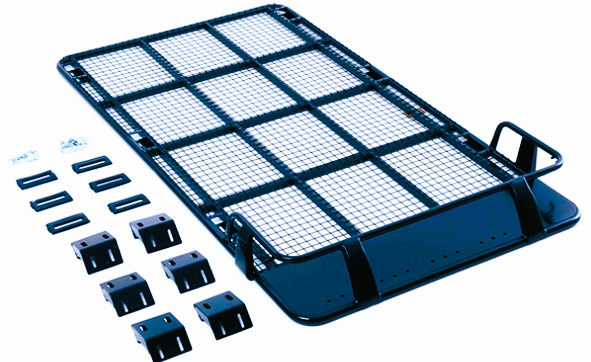
- Overview of Storage Options:
- Roof Racks: These allow for the transportation of larger items such as tents, canoes, or bicycles without consuming interior space.
- Cargo Boxes: Secure storage solutions that protect gear from the elements while maximizing storage capacity.
- Drawer Systems: Customizable drawers can be installed in the vehicle’s cargo area to keep tools and supplies organized, making access quick and efficient.
- Importance of Organization and Balanced Weight Distribution: Organizing gear properly ensures quick access and reduces clutter, which is vital during expeditions. Balanced weight distribution helps maintain vehicle stability, improving handling on uneven terrain and reducing the risk of rollover.
Power Management
- Discuss Dual Battery Systems, Solar Panels, and Inverters:
- Dual Battery Systems: This setup provides an auxiliary battery for electronics, appliances, and accessories without depleting the main starting battery, essential for extended trips.
- Solar Panels: Using solar panels allows for renewable energy collection, keeping batteries charged and supporting devices such as lights, fridges, and communication devices.
- Inverters: Inverters convert DC power from batteries to AC power, enabling the use of standard electrical appliances, making your overland setup more versatile.
- Importance of Reliable Power Sources During Extended Trips: Reliable power is crucial for maintaining comforts like refrigeration, lighting, and communication devices while deep in the wilderness. Having a robust power system ensures you can stay connected and safe, even in remote locations.
Navigation and Communication
- Tools for Navigation:
- GPS Devices: Standalone GPS units offer detailed topographic maps and can work without cell signal, providing precise navigation in off-road situations.
- Maps and Smartphone Apps: Traditional maps are invaluable for offline navigation, while many smartphone apps can download maps for offline access, offering user-friendly interfaces and additional features.
- Communication Devices:
- Satellite Phones: These are essential for communication in areas without cellular coverage, providing a reliable connection for emergencies.
- Two-Way Radios: Useful for group travel, two-way radios facilitate communication between vehicles, especially in areas where signal is weak or unavailable.
Cooking and Food Storage
- Portable Cooking Systems: Having a reliable cooking system is vital for meal preparation while on the road. Options include portable gas stoves, compact grills, and multi-fuel options that cater to various cooking styles. Investing in quality cookware that’s lightweight and compact is also beneficial.
- Food Storage Solutions:
- Coolers: High-performance coolers, possibly with insulation, can keep food fresh and beverages cold for several days, making them an essential part of overlanding gear.
- Dry Food Supplies: Utilizing airtight containers to store dry food supplies helps keep items fresh and prevents spoilage or contamination. Non-perishable food options like freeze-dried meals, nuts, dried fruits, and energy bars are excellent choices for convenience and lightweight packing.
Safety and Emergency Gear
- Essential Safety Items:
- First Aid Kits: A comprehensive first aid kit should include bandages, antiseptics, adhesive tape, gauze, and essential medications. It’s also wise to include items specific to your group’s needs, such as allergy medications and personal prescriptions.
- Recovery Gear: Essential recovery gear includes items like tow straps, a recovery winch, traction boards, and a shovel. These tools are invaluable for getting your vehicle unstuck from mud, sand, or snow. It’s crucial to know how to use this gear effectively to minimize risk and avoid injury.
- Importance of Fire Safety Items and Emergency Supplies:
- Fire Safety Items: Carrying a compact fire extinguisher is essential for fire prevention, especially when cooking or using gas equipment. Additionally, packing fire starters and a means to create fire can be beneficial for warmth and cooking in emergencies.
- Emergency Supplies: A well-stocked emergency kit should include items like emergency blankets, whistles for signaling, flares for visibility, and multi-tools for various uses. Consider adding items to shelter from the elements, such as ponchos or tarps, and ensure you have a reliable means of communication in case of emergencies.
Choosing the Right Gear
A. Considerations for Selecting Gear: Weight, Durability, Size
- Weight: When selecting gear for overlanding, weight is a critical factor. Since your vehicle must carry everything, keeping the total weight manageable is essential for performance, fuel efficiency, and safety. Lighter gear can help increase your vehicle’s off-road capability and reduce strain on suspension components. Always consider weight ratings and choose equipment that balances functionality with minimal weight.
- Durability: Overlanding gear must withstand harsh outdoor conditions, from extreme temperatures to rough terrains. Look for materials that are tough and weather-resistant. Gear constructed from high-quality materials (e.g., nylon, aluminum, or rugged plastics) will last longer and can handle the wear and tear of multiple trips. Investing in durable products may have a higher upfront cost, but it pays off in the long run through reliability and reduced replacement needs.
- Size: Consider size both in terms of packing and functionality. Gear should fit comfortably within your vehicle, leaving enough space for passengers and other essentials. Compact and multifunctional gear can save space while still meeting your needs. Ensure that larger items, like tents or cookers, can be easily deployed without excessive effort or confusion, allowing for a more enjoyable experience.
B. The Importance of Research and Reviews
- Research: Before purchasing any gear, thorough research is essential. Investigate different types of products, brands, and models to find the best fit for your specific needs. Understanding the features, pros, and cons of each piece of gear can help you make informed decisions.
- Reviews: Reading reviews from other overland travelers can provide valuable insights into how the gear performs in real-world conditions. Look for reviews from individuals who have used the equipment on similar trips or terrains to yours. Pay attention to feedback regarding durability, ease of use, and overall satisfaction. Online forums and communities can be excellent resources for personal experiences and advice from fellow overlanders.
C. Tips for Prioritizing Essential Items Based on Trip Length and Destination
- Trip Length: For shorter trips (1-3 days), focus on the essentials, such as a reliable shelter, cooking gear, and safety items. For extended trips (1 week or more), prioritize additional comfort items and equipment to support your specific activities (e.g., extra food storage, solar power systems for electronic devices).
- Destination: The type of terrain and climate you will encounter should heavily influence your gear selection. If your destination includes rugged terrain and variable weather, ensure you have equipment that can withstand those conditions, including durable clothing and versatile cooking systems. For trips in hotter climates, prioritize cooling items, such as portable fans or breathable shelter fabrics.
- Activity-Specific Gear: Tailor your gear to the activities you plan to engage in. If hiking or biking is part of your adventure, consider bringing lightweight backpacks, hydration systems, and gear specifically designed for those activities. Understanding your itinerary and objectives allows for more targeted gear selection.
- Trial and Testing: Before embarking on your adventure, test your gear in a safe environment to familiarize yourself with its function and setup. This can help identify any potential issues that need addressing and allows for adjustments to your packing list based on hands-on experience.
Exploring the Thrill and Versatility of Powersports Vehicles 2024
NITHIN FERNAND
Customization of Overland Vehicle Systems
Benefits of Customizing a Vehicle for Personal Preferences
- Personalization: Customizing your overland vehicle allows you to tailor it to your specific needs and preferences. Whether you prioritize storage solutions, comfort, performance, or aesthetics, a customized vehicle reflects your unique style and requirements, providing a more enjoyable adventure experience.
- Enhanced Performance: Custom modifications can significantly improve your vehicle’s performance in challenging terrains. Upgrading suspension, tires, and drivetrain components can enhance handling, stability, and off-road capability, ensuring that your vehicle performs optimally in various environments.
- Increased Comfort: Personalizing your vehicle enhances comfort during long journeys. Custom seats, climate control systems, and soundproofing can create a more enjoyable driving experience, while custom sleeping arrangements, like roof tents or bed platforms, ensure a good night’s rest.
- Improved Efficiency: Customization allows you to optimize cargo space and organization for better efficiency. Installing drawer systems or partitioned storage solutions can help keep gear organized and easy to access, minimizing setup time at campsites and maximizing your overall efficiency.
Popular Modifications
- Bed Racks: Bed racks are versatile solutions for maximizing cargo space on trucks. These racks provide a sturdy base for additional storage options, such as roof boxes, and can secure items like kayaks, bikes, or other outdoor equipment. Bed racks are essential for ensuring that larger equipment is safely transported without compromising interior space.
- Awnings: Adding an awning to your overland vehicle creates instant shade and shelter, enhancing your outdoor living space. This modification is particularly useful during longer stops or campsite stays, providing protection from the elements while cooking, relaxing, or enjoying meals. Many awnings are easy to deploy and retract, making them convenient for quick setups.
- Lighting Upgrades: Upgrading the vehicle’s lighting system can significantly improve safety and visibility during nighttime driving and camping. Additional LED light bars, fog lights, or interior lighting can enhance illumination for off-road navigation and campsite activities. Enhanced visibility makes it easier to spot hazards and navigate tricky terrain after dark.
- Roof Racks and Crossbars: Essential for carrying extra gear, roof racks and crossbars allow you to transport larger items like cargo boxes, bikes, or even kayaks, freeing up interior space and making trips more comfortable. Custom roof systems can be designed to accommodate specific gear, enhancing overall functionality.
- Suspension Upgrades: Installing an upgraded suspension system can improve off-road handling and ride quality. Lift kits, heavy-duty shocks, and springs allow for better clearance over obstacles and provide a smoother ride on rough terrain, enhancing overall capability.
Enhancing Comfort and Functionality through Customization
- Living Space Solutions: Customization allows for the addition of comforts like sleep systems, such as roof-top tents, sleep platforms in the back of SUVs, or portable beds. Custom cabinetry and storage solutions can also make living space more functional and organized, ensuring that everything has its place while on the road.
- Climate Control: Adding auxiliary heating or cooling systems can dramatically enhance comfort during extended trips in varying climates. Portable heaters, aftermarket air conditioning systems, or ventilation upgrades can ensure a comfortable cabin temperature regardless of the weather conditions.
- Integrated Technology: Installing modern technology upgrades, like navigation systems, Bluetooth integration, and advanced audio systems, can transform your vehicle into a more connected and convenient environment. Smart vehicle management systems can also assist in monitoring battery levels, tire pressure, and even GPS tracking.
- Storage Solutions: Custom drawer systems, slide-out kitchens, and modular storage compartments help ensure everything from cooking equipment to recovery gear is easy to access yet secure during travel. These enhancements maximize functionality in limited space, making life on the road more enjoyable and efficient.
- Safety Features: Customizing your vehicle can also include adding safety enhancements, such as backup cameras, additional mirrors, and even collision-avoidance systems. Installing these features increases situational awareness during driving and parking, particularly in rugged or unfamiliar areas.
Planning Your Overland Adventure
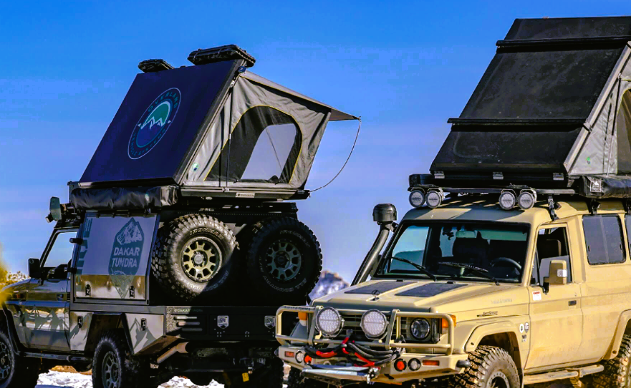
Importance of Route Planning and Research
- Identifying Destinations: Proper route planning allows you to select destinations that align with your interests, whether it be national parks, scenic byways, or remote backcountry locations. Researching beforehand helps ensure you know which areas are accessible and what activities (like hiking, fishing, or exploring) are available at each stop.
- Understanding Navigation: Good navigation is critical for safely reaching your destinations. Familiarize yourself with the best maps, GPS systems, and navigation apps. Offline maps are particularly useful in areas with little to no cell signal. Understanding how to read topographic maps can enhance your navigation skills, especially in remote regions.
- Avoiding Hazards: Researching your route ahead of time allows you to identify potential hazards such as difficult terrains, water crossings, or steep inclines. Knowing what to expect helps you prepare mentally and physically, ensuring a safer and more enjoyable journey.
- Time Management: Planning your route helps in estimating travel times and scheduling breaks, meals, and overnight stops. This ensures that you arrive at your destinations when the light is still good and that you have ample time to explore and enjoy your surroundings.
Tips for Preparing Your Vehicle and Gear
- Vehicle Inspection: Before your adventure, conduct a thorough inspection of your vehicle. Check fluid levels, tire pressure, brakes, and battery health. Ensure all lights and signals are functional. Address any issues beforehand to avoid breakdowns while on the road.
- Gear Check: Prepare a comprehensive checklist of all necessary gear and equipment. Go through your gear well in advance, making sure that everything is in working order. This includes testing camping equipment, cooking tools, and safety gear like first aid kits and recovery tools.
- Packing Smart: Organize your gear for easy access, particularly for items you may need first, such as safety gear or cooking equipment. Use packing cubes or small containers to keep similar items together. Balancing weight distribution within your vehicle can help ensure stable handling on rough terrain.
- Emergency Preparedness: Prepare an emergency kit tailored to your trip, including extra food, water, clothing, and specialized gear (like a fire extinguisher, spare tire, and recovery gear). Knowing you have the supplies to handle unexpected situations conveys peace of mind while traveling.
Considerations for Weather, Terrain, and Local Regulations
- Weather Conditions: Prior to your trip, check weather forecasts for your route and destinations. This helps in making informed decisions about clothing, gear, and route adjustments. Weather can change rapidly, especially in mountainous or remote areas, so prepare for various conditions, including rain, snow, or extreme heat.
- Terrain Awareness: Research the type of terrain you will be traversing. Different terrains require different gear and techniques. For instance, rocky landscapes may necessitate a focus on your vehicle’s clearance and tire type, while sandy areas may require recovery gear and sand ladders. Understanding what to expect enhances your readiness and can prevent accidents or getting stuck.
- Local Regulations: Familiarize yourself with local laws and regulations regarding camping, driving, and safety. Some areas may have restrictions on campfires, off-road driving, or specific camping sites. Additionally, understanding right-of-way rules on trails and road etiquette can foster positive relationships with other campers and local wildlife.
- Emergency Services and Communication: Know the locations of nearby emergency services or hospitals along your route. Carry reliable communication devices (like satellite phones) if you’ll be in areas without cell service. Understanding how to reach help in emergencies is crucial, especially in remote locations.
Conclusion
In the world of overlanding, having a well-equipped vehicle system is paramount to ensuring a successful and enjoyable adventure. A thoughtfully customized and adequately prepared vehicle enhances not only your capability to navigate various terrains but also your comfort and safety during long journeys. Essential gear, strategic modifications, and careful planning transform your vehicle into a dependable basecamp that can handle the unpredictable nature of the great outdoors. By focusing on the right equipment, careful route planning, and personalized modifications, adventurers can maximize their experiences and minimize potential challenges along the way.
If you’ve been contemplating the idea of overlanding, now is the perfect time to take the plunge into this thrilling lifestyle. Whether you’re a seasoned traveler or a newcomer, the journey of overlanding invites exploration, discovery, and personal growth. With countless trails, diverse landscapes, and vibrant cultures waiting to be experienced, each adventure brings new opportunities to connect with nature and create lasting memories. Don’t hesitate to start planning your trip—gather your gear, prepare your vehicle, and embrace the freedom of the open road.
As you embark on your overlanding journey, remember that adventures often begin outside of your comfort zone. The road may be uncertain, but it is within this uncertainty that some of life’s most beautiful experiences unfold. Picture yourself under starlit skies, waking up to breathtaking sunrises, and forging unforgettable friendships with fellow travelers. Each twist and turn will lead you to new landscapes, hidden gems, and personal triumphs. Embrace the spirit of adventure—be curious, be bold, and savor every moment. The world is vast, and your next great overlanding escapade awaits! Adventure is calling; will you answer? Happy trails!
Call to Action
A. Invite Readers to Share Their Own Overlanding Experiences
We would love to hear from you! Your overlanding experiences are valuable and can inspire others on their own adventures. Whether you’ve tackled rugged trails, discovered hidden gems, or faced unexpected challenges, sharing your stories can enrich our community. Join the conversation by leaving a comment, posting photos, or sharing tips from your own overlanding journeys. Let’s connect and create a tapestry of adventure, where we can learn from one another and celebrate the spirit of exploration together!
B. Suggest Subscribing for More Tips and Insights on Overlanding Gear and Adventures
If you’re passionate about overlanding and want to stay updated on the latest gear, tips, and insights, we encourage you to subscribe to our newsletter or blog. By signing up, you’ll gain access to expert advice on vehicle modifications, essential gear checklists, destination highlights, and much more. Whether you’re a novice or a seasoned overlander, our resources are designed to enhance your journey and ensure you’re prepared for every adventure ahead. Don’t miss out on the excitement—join our community and embark on the adventure of a lifetime with us! Happy overlanding!
FAQ
1. Overland vehicles: what are they?
traveling across difficult terrain in a truck camper or other vehicle outfitted to endure rough roads over extended distances.
2. How is overlanding carried out?
transporting a self-sufficient car over tough terrain over several days.

